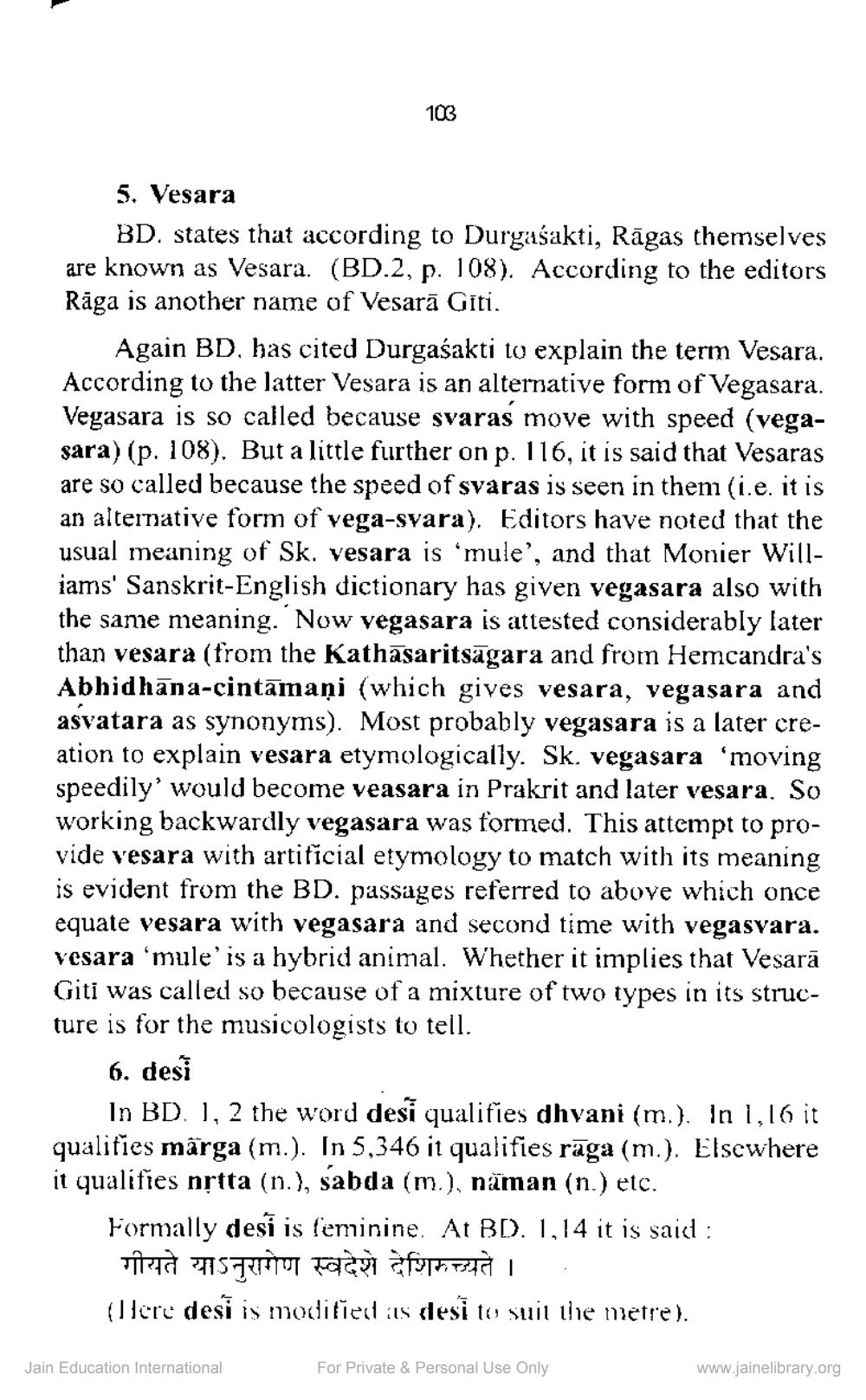________________
103
5. Vesara
BD. states that according to Durgasakti, Rāgas themselves are known as Vesara. (BD.2, p. 108). According to the editors Rāga is another name of Vesarā Giti.
Again BD, has cited Durgasakti to explain the term Vesara. According to the latter Vesara is an alternative form of Vegasara. Vegasara is so called because svaras move with speed (vegasara) (p. 108). But a little further on p. 116, it is said that Vesaras are so called because the speed of svaras is seen in them (i.e. it is an alternative form of vega-svara). Editors have noted that the usual meaning of Sk. vesara is 'mule', and that Monier Williams' Sanskrit-English dictionary has given vegasara also with the same meaning. Now vegasara is attested considerably later than vesara (from the Kathasaritsāgara and from Hemcandra's Abhidhāna-cintāmaņi (which gives vesara, vegasara and asvatara as synonyms). Most probably vegasara is a later creation to explain vesara etymologically. Sk. vegasara 'moving speedily' would become veasara in Prakrit and later vesara. So working backwardly vegasara was formed. This attempt to provide vesara with artificial etymology to match with its meaning is evident from the BD. passages referred to above which once equate vesara with vegasara and second time with vegasvara. vesara 'mule' is a hybrid animal. Whether it implies that Vesarā Giti was called so because of a mixture of two types in its structure is for the musicologists to tell.
6. desi
In BD. ), 2 the word desi qualifies dhvani (m.). In 1,16 it qualities märga (m.). In 5,346 it qualifies rāga (m.). Elsewhere it qualifies nștta (n.), sabda (m.), nüman (n.) etc.
Formally desi is feminine. At BD. 1,14 it is said:
गीयते याऽनुरागेण स्वदेशे देशिमच्यते । (llore desi is modified its slesi to suit the metre).
Jain Education International
For Private & Personal Use Only
www.jainelibrary.org




